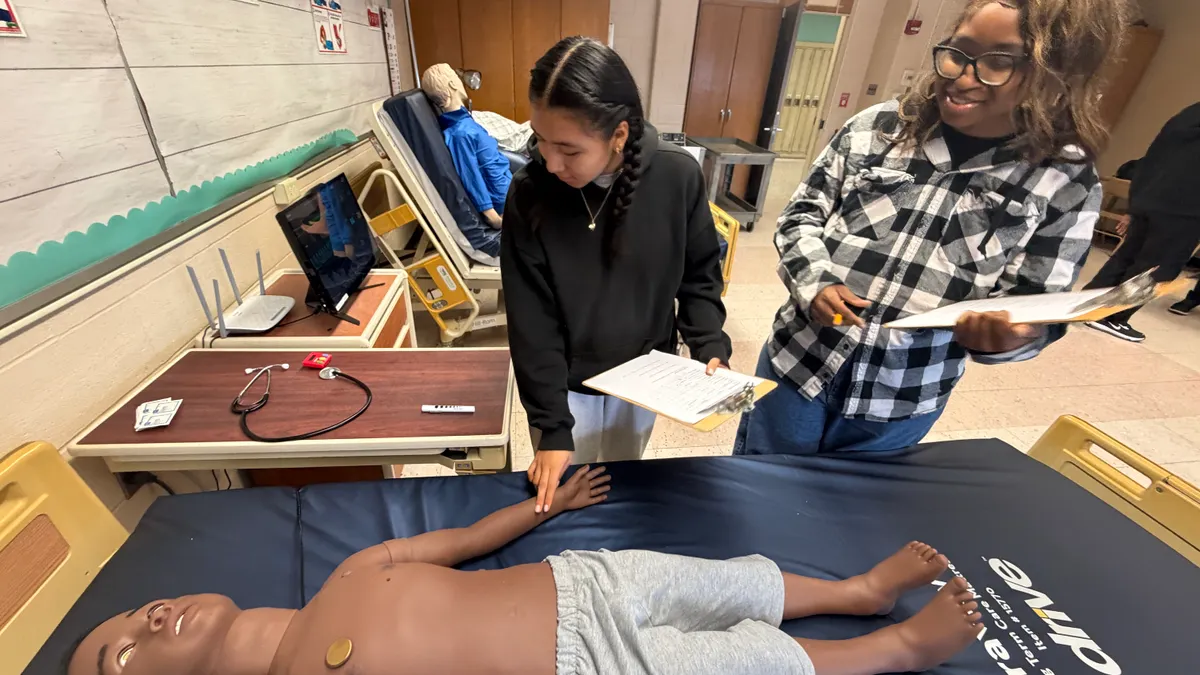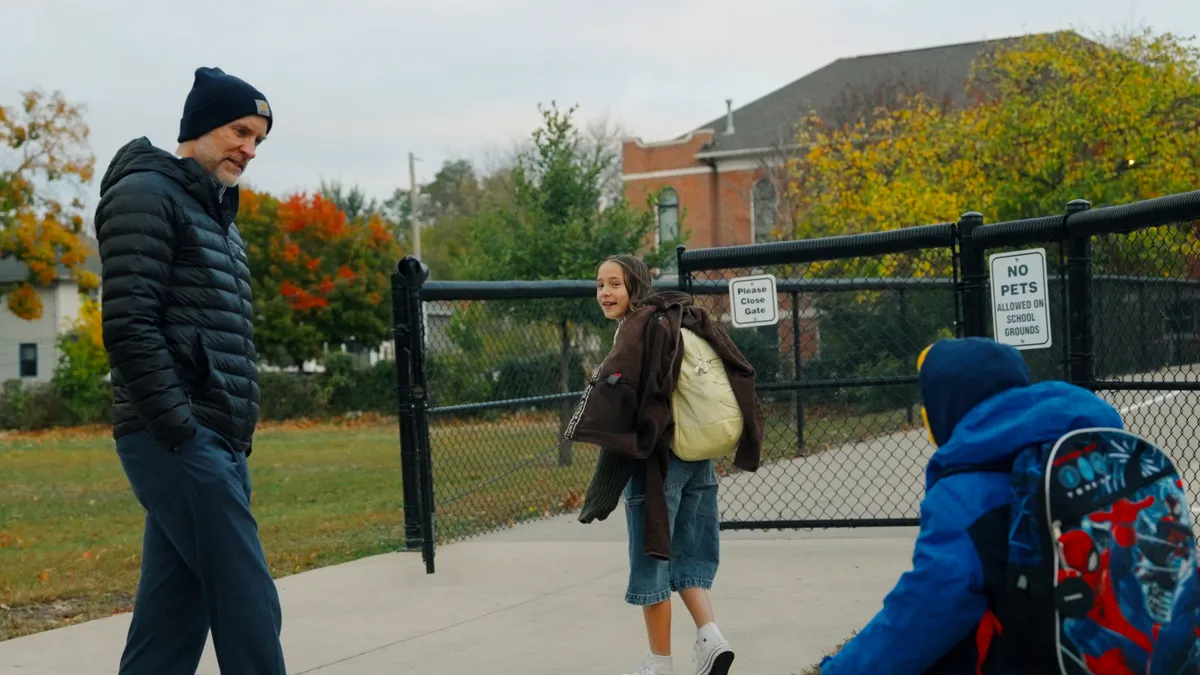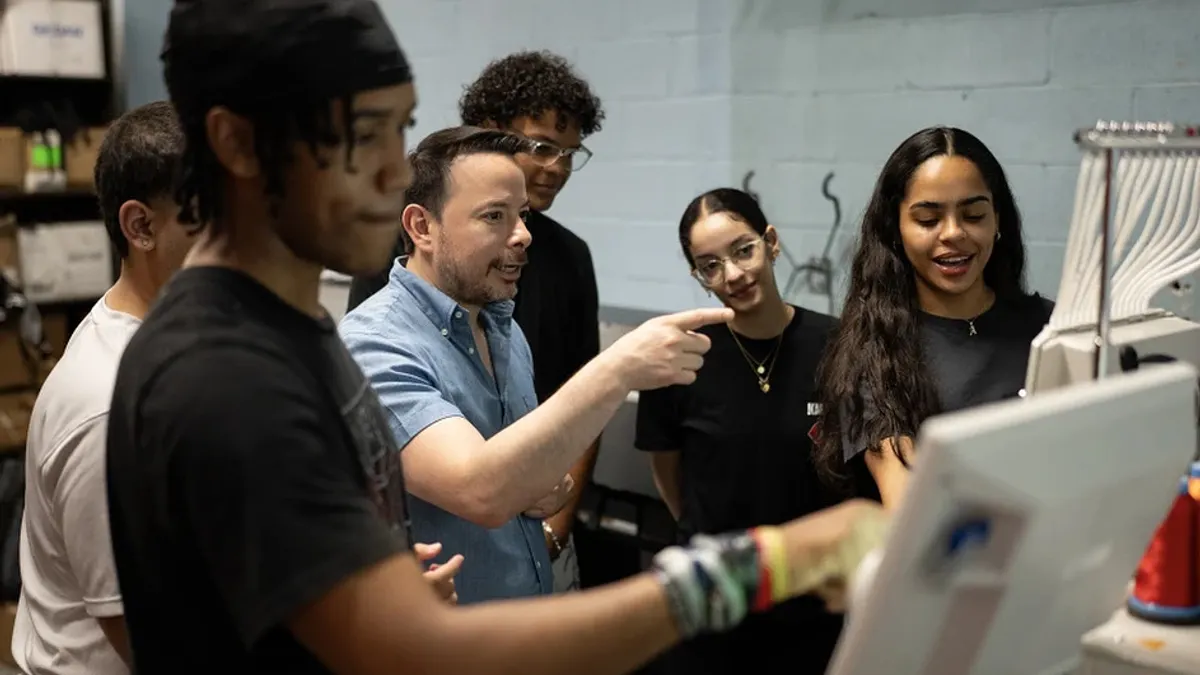LOS ANGELES — School leaders are increasing efforts to integrate social-emotional learning into the instructional day to improve learning and positive outcomes for students. Meanwhile, arts educators and advocates are pushing to give students more opportunities for participation in the arts, both during and after school hours.
The two interests came together last week for a conversation about how the arts can help schools accomplish SEL goals and serve as a way to measure improvements in school climate at an event sponsored by Turnaround Arts, a project of the Kennedy Center for the Performing Arts.
“The [SEL] field has a lot of ideas about what we ought to be teaching kids, but the field is very open-ended on the how,” said Timothy Shriver, co-founder of the Collaborative for Academic, Social and Emotional Learning, a former educator and chairman of the Special Olympics. The arts, he said, have “a lot to offer in the how. This is a beautiful potential relationship.”
Linda Darling-Hammond, president and CEO of the Learning Policy Institute, described the benefits that arts experiences have on student learning, including building memory and language. “There are things we do that the arts are very central to,” she said.
Both she and Shriver also said that with the Every Student Succeeds Act replacing No Child Left Behind, there are opportunities to assess schools and students through more than just test scores, including capstone projects and performance and portfolio assessments.
“We are entering a whole-child era,” Darling-Hammond said.
Many states are also including the results of school climate surveys as part of their education accountability systems in addition to test scores. And it’s less likely that students’ responses on questions such as whether their school is safe or caring would be used “punitively” against schools, Shriver said, but added, “If kids are saying it’s not, that’s an important piece of data.”
In addition, some states have specifically noted the arts as an element of school quality in their state accountability plans for ESSA. Connecticut, Illinois and Kentucky have gone the farthest in this direction.
Principals look for guidance
Bringing together funders, researchers, leaders of nonprofits and district administrators, the event was also Turnaround Arts: California, affiliated with the greater national program.
The gathering was held at the firm of architect Frank Gehry, who co-founded the California nonprofit. The network includes 27 low-performing schools across the state, which receive professional development and coaching on integrating arts into instruction. Schools also commit to weekly arts opportunities for all students.
“We are as much turnaround as we are arts,” said Akida Kissane Long, Turnaround Arts: California’s principal leadership coach and a former principal in the Los Angeles Unified School District. She added that a larger role for the arts improves student behavior and makes schools more welcoming for families and community members.
“The kids know that their parents are there to see them succeed,” she said.
A recent report from researchers at Pennsylvania State University adds to other evidence of school leaders’ growing focus on SEL. The authors cite a 2017 survey showing that 98% of K-12 principals believe schools can teach competencies such as empathy, self-regulation and interpersonal skills, and that these skills “help promote equality and reduce educational disparities.”
But the results also showed that principals “reported needing substantial guidance on how to implement SEL,” the Penn State researchers wrote.
The report addresses the “considerable” demands placed on principals, noting that building their own social-emotional skills can improve their success as leaders. But a participant at the event commented that the combination of instructional and managerial demands on principals can interfere with them pursuing models such as arts integration.
A more recent survey shows that support for SEL among school leaders has continued to grow. Other experts are also drawing attention to the links between the arts and SEL. A June report noted that the arts can give students additional ways to demonstrate qualities such as perseverance. But because artistic expression can be very personal and feel risky for many students, the authors urged educators to focus on making the experience a positive one.
‘Tipping point for student gains’
Educators, too, are considering SEL as a response to the needs of students who have been through traumatic experiences in their families and communities. That was the focus of a study that researcher Ivonne Chand O'Neal conducted in the Chula Vista Elementary School District — near California’s border with Mexico — where schools have been affected by recent immigration enforcement actions.
An arts researcher, O’Neal examined the impact of arts integration in four Title I schools — one with a separate arts class (no integration) and three with low, medium and high levels of arts integrated throughout the curriculum. Scores on measures of creativity and SEL skills only increased in the school with high arts integration.
O’Neal highlighted that scores increased in both emotional control and empathy — “two skills that are most needed and of greatest benefit to students in this population,” she said in an email to Education Dive, adding that “the four-year mark of sustained arts integration emerged as the tipping point for student gains.”
The results were not statistically significant, she said, but “they point to a trend indicating that sustained arts integration in high-trauma educational environments improves creativity, engagement and SEL.”
Chula Vista ESD Superintendent Francisco Escobedo said at the event last week that arts integration is also a strategy for ensuring that teachers collaborate with each other. They design lessons, view student work and create criteria for assessments, he said. “We purposely make sure we enhance teacher leadership from the onset,” Escobedo pointed out.
Chula Vista ESD was one of seven school districts in California recently recognized as a “positive outlier” for having higher-than-predicted test scores, considering students’ socioeconomic status.
Instrumental vs. intrinsic benefits
The connection to SEL likely raises the issue of whether the arts are valuable in schools on their own or if some state and district leaders will still judge arts integration based on what else it can accomplish.
"There is a longstanding conversation about the instrumental versus the intrinsic benefits of the arts — whether the arts are important in service of other outcomes or if they are important for their own sake," said Mary Dell'Erba, senior project manager with the Arts Education Partnership, part of the Education Commission of the States. "With social-emotional learning, the arts provide both benefits. Social and emotional skills learned in the arts benefit students individually, in school and in life."
Shriver stressed that it’s still important to highlight academic benefits when making the case for expanding the arts “because that’s the game that most educators feel they still have to play,” he said. “A little bit of good academic data can open a lot of doors.”






 Dive Awards
Dive Awards












